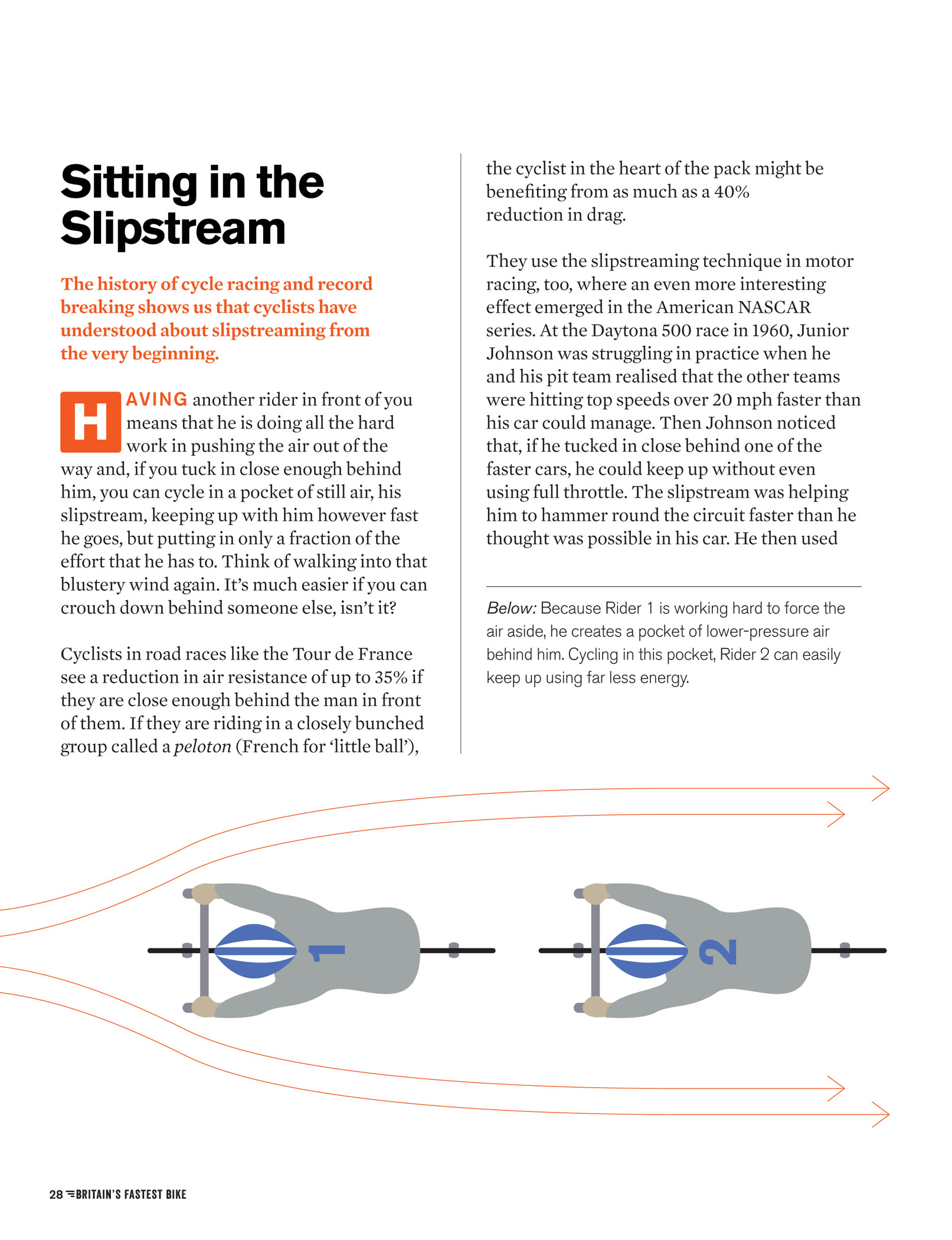
Sitting in the
Slipstream
The history of cycle racing and record
breaking shows us that cyclists have
understood about slipstreaming from
the very beginning.
AVING another rider in front of you
means that he is doing all the hard
work in pushing the air out of the
way and, if you tuck in close enough behind
him, you can cycle in a pocket of still air, his
slipstream, keeping up with him however fast
he goes, but putting in only a fraction of the
effort that he has to. Think of walking into that
blustery wind again. It’s much easier if you can
crouch down behind someone else, isn’t it?
H
Cyclists in road races like the Tour de France
see a reduction in air resistance of up to 35% if
they are close enough behind the man in front
of them. If they are riding in a closely bunched
group called a peloton (French for ‘little ball’),
see a reduction in air resistance of up to 35% if
they are close enough behind the man in front
of them. If they are riding in a closely bunched
group called a peloton (French for ‘little ball’),
1
the cyclist in the heart of the pack might be
benefiting from as much as a 40%
reduction in drag.
They use the slipstreaming technique in motor
racing, too, where an even more interesting
effect emerged in the American NASCAR
series. At the Daytona 500 race in 1960, Junior
Johnson was struggling in practice when he
and his pit team realised that the other teams
were hitting top speeds over 20 mph faster than
his car could manage. Then Johnson noticed
that, if he tucked in close behind one of the
faster cars, he could keep up without even
using full throttle. The slipstream was helping
him to hammer round the circuit faster than he
thought was possible in his car. He then used
Below: Because Rider 1 is working hard to force the
air aside, he creates a pocket of lower-pressure air
behind him. Cycling in this pocket, Rider 2 can easily
keep up using far less energy.
2
28 Britain’s Fastest Bike